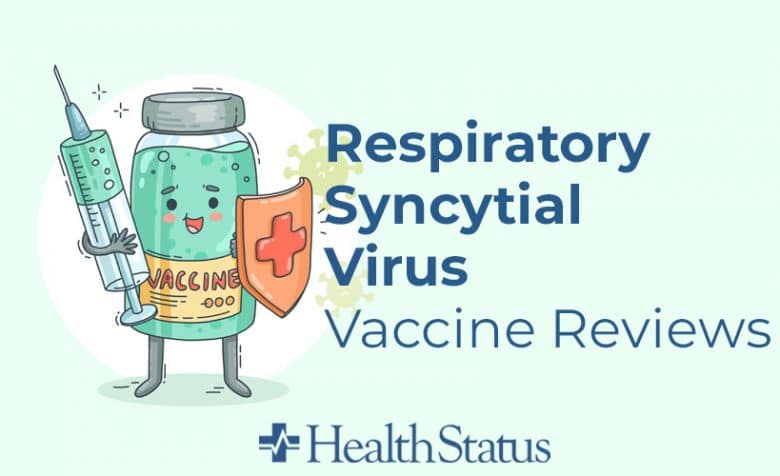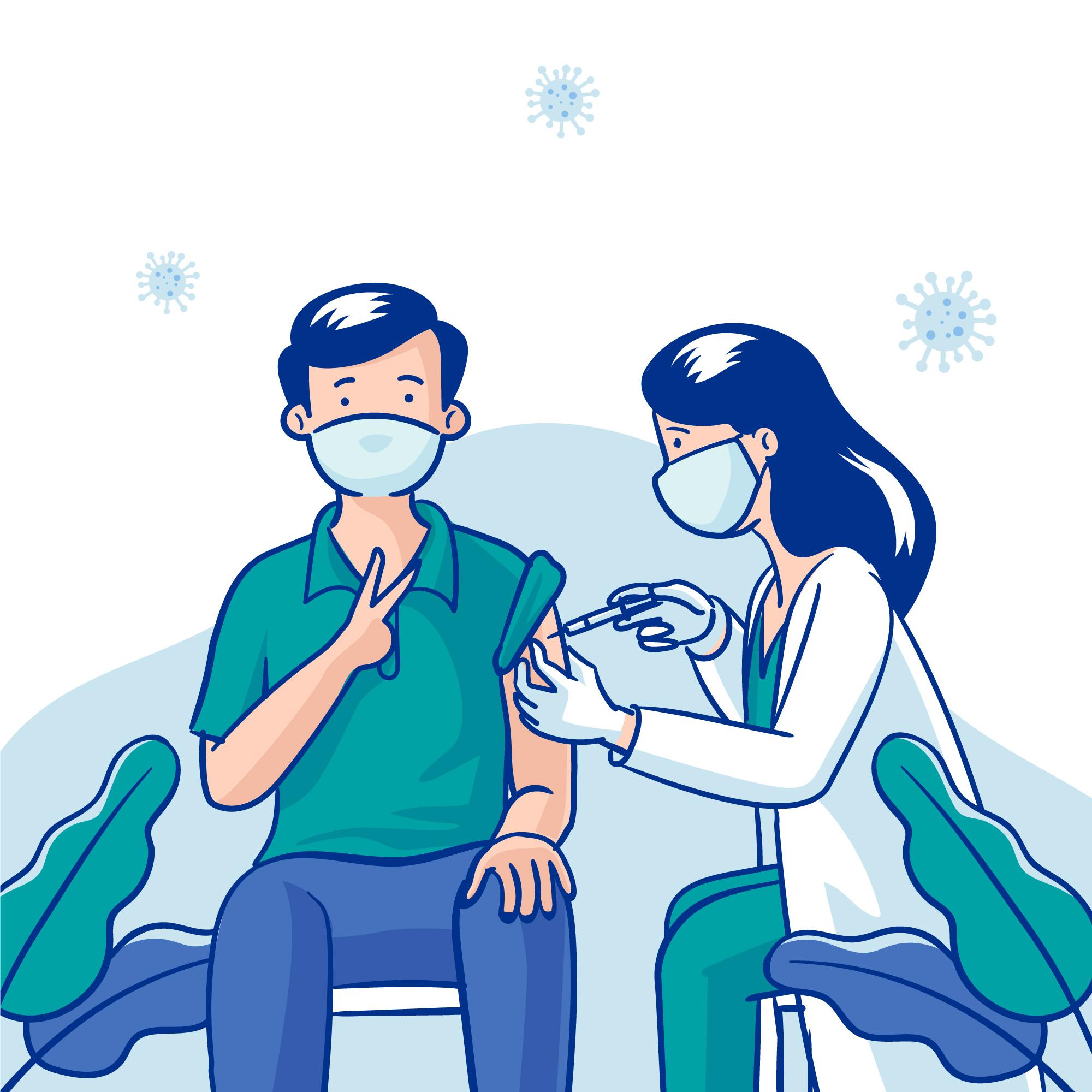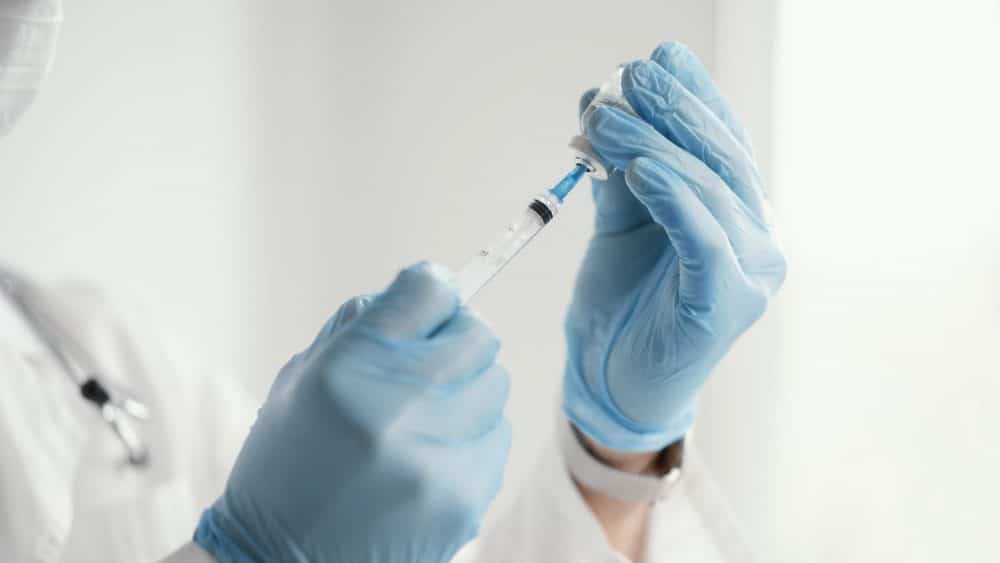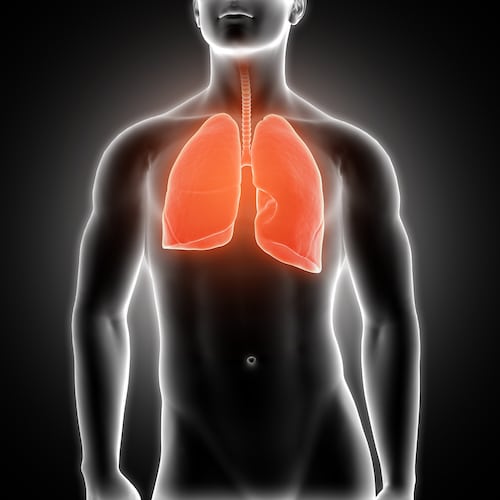
RSV, or Respiratory syncytial virus, is one of the leading causes of acute respiratory illness among infants and older adults. In the United States alone, the virus is responsible for the hospitalization of at least 177,000 older adults each year, 14,000 of whom die due to the infections.
RSV also causes about 3 million children below the age of five to be hospitalized out of an estimated 33 million cases reported annually. Of these children, about 120,000 die from complications associated with the infection every year.
These statistics indicate the staggering disease burden of the respiratory syncytial virus and why a corresponding vaccine is of the essence. But are there any immunization options currently available for RSV? Read along to learn about the respiratory syncytial virus, how to manage it and any immunization options currently approved for RSV.
What is Respiratory Syncytial Virus (RSV)?
Respiratory syncytial virus, or RSV, is a pathogen that commonly causes acute respiratory illness. It affects the lungs and airways leading into and out of the lungs.
While the virus can attack and affect people of all ages, infants, young children below five years old, and older adults, especially with prior medical conditions, are at the highest risk of RSV infections and related complications.

The virus usually causes mild symptoms similar to a common cold. While most people infected with the respiratory syncytial virus recover in a week or two, others often require hospitalization and proper treatment to recover.
RSV is typically more serious and even lethal for infants under five years old and older adults. Both groups of people can get critical with an RSV infection if they have existing medical conditions.
Often, RSV infection is associated with other life-threatening conditions that emerge following an RSV attack. It is the most common cause of pneumonia (a lung infection) and bronchiolitis (inflammation of the lower respiratory tract) in children below two years old in the United States.
Acute respiratory infection resulting from the respiratory syncytial virus is a leading cause of morbidity and death in children below five years worldwide. According to global estimates, RSV is associated with approximately 0.3 million deaths in young children yearly. The majority of these deaths are recorded in low-income countries.
Summary
| Virus Name | Respiratory syncytial virus (RSV) |
| Available vaccine | No approved vaccine is available yet |
| Mode of transmission | Transmissible through contact with droplets from the nose and throat of infected persons when they sneeze or cough. |
| Treatment | Hospitalized patients may require oxygen, mechanical ventilation, or intubation to support breathing. |
| Related conditions | Pneumonia, asthma, chronic obstructive pulmonary disease (COPD), and congestive heart failure |
| Ideal candidates for vaccination | Older adults with chronic medical conditions and children, especially below five years old |
| Symptoms of infection | Initial RSV symptoms include congestion, fever, sore throat, runny nose, and cough. Infected infants may become fatigued, irritable, and experience breathing difficulties. |
What is Respiratory Syncytial Virus Vaccine?

Respiratory syncytial virus vaccine development began in the 1960s and was aborted after an unsuccessful start. Initial tests of the vaccine-induced a severe inflammatory response of the lungs that resulted in two deaths of participating infants. Consequently, all attempts to develop a vaccine against RSV stopped for several years.
The initial vaccine failure raised concerns over its safety and possible efficacy, hindering the development of alternative vaccines against the virus.
Thankfully, scientists continued to seek a better understanding of the working of the respiratory syncytial virus. These efforts seem to have borne fruit since multiple vaccine candidates have entered clinical development in recent years. A number of these potential vaccines are almost ready for end-stage human trials and only await regulatory approval.
So far, the candidate vaccines developed through various means have shown promising results, shading a ray of light into the future of RSV prevention. The vaccines work differently from the original ones developed in the 1960s. The results of various tests indicate the possibility of having a working RSV vaccine for infants and young children in the near future.
Why has RSV Vaccine been delayed?
Several decades have passed since the 1960s, when the first attempt to create an RSV vaccine was made. To date, no vaccine has been approved for RSV or the respiratory syncytial virus. Why are numerous vaccines now in the pipeline for the first time in such a long time?
The virus triggers an immune response that is much different from other known viruses. While this may not be the main reason behind the tragic failure of the initial RSV vaccine in the 1960s, it made developing an efficacious immunization challenging.

Unlike many common viruses, RSV has a natural adaptation protecting it from the body’s systemic immunity. It can evade much of the victim’s systemic immune mechanisms as it resides primarily outside of the body.
This adaptation makes the virus pretty evasive compared to other pathogens such as morbillivirus (measles-causing virus). If the latter infects your body, your system recognizes it and develops a permanent immunity against it.
On the other hand, if the respiratory syncytial virus infects your body, there will be no immune memory to recognize it the next time it attacks. So you can still acquire the virus in the future and get sick.
This evasive tactic of RSV is partly the reason it took so long to understand how to develop lasting protection against RSV. Nonetheless, scientists are now highly optimistic about the future of RSV immunization after making some significant breakthroughs over the last few years.
Ideally, scientists needed to conduct thorough research to come up with a conclusive way to approach the vaccine question. This long-drawn-out process has resulted in dozens of investigational RSV vaccine trials with good potential.
Which RSV vaccines are under development?
Three different types of vaccines are currently in the pipeline for use against RSV. These categorizations result from the strategies used to develop the vaccines.
Type 1: F protein of the virus
The first type of immunization against the respiratory syncytial virus involves using the Virus’ F protein on pregnant women with the aim of transferring the protection to the unborn baby.
This strategy involves intramuscular administration of the F protein of the virus to expectant mothers at a specified pregnancy window. The protein is intended to boost the mothers’ antibody response, which is then transferred to the unborn baby.
Administering this vaccine is supposed to occur within a specific window for optimum protection. Ideally, it should happen early enough to protect the baby from infections.
Scientists also intend to use this vaccine in elderly patients at risk of RSV infections.
Type2: Live-attenuated virus vaccine
The second vaccine type follows the same approach as most vaccines available in the market today. It involves a gene-based delivery of a live-attenuated virus into the patient’s body. This type of vaccine is designed for young children.
It is currently the most prevalent approach that multiple pharmaceutical and biotechnology companies are pursuing.
Type 3: Monoclonal antibody vaccine
The final vaccine type developed for use against the respiratory syncytial virus involves using a monoclonal antibody to attack the surfaces on the virus’ F protein in infants at birth.
This approach is termed passive immunity since it is technically not a vaccine but a form of protection against the evasive virus. Currently, some biotechnology companies are using this approach to develop an exclusive treatment against RSV for high-risk children.
Some scientists say the protection is highly potent and recommended for all infants, not just those at high risk of RSV morbidity and mortality alone.
RSV vaccines in the pipeline
RSV vaccine development has seen some notable progress. Various vaccine developers have enrolled volunteers for clinical trials of investigational RSV vaccines with significant success.
In one of the trials, a group of healthy volunteers had the vaccine administered in the form of nasal drips. The argument behind this approach is to get the immune system to recognize the virus in the nose since actual infections occur through the nose.

Getting the body to respond to the vaccine drip in the nose would be an excellent way to get a better protective response. These tests utilized a combination of the RSV protein and Sendai virus, a pathogen in mice that can replicate in humans without causing sickness.
These specific trials exemplify safety studies carried out to test and demonstrate the vaccine’s safety profile. They also help to illustrate the ability of the recipient’s immune system to develop a strong antibody response against the RSV F protein once it sees it.
After successful safety tests on healthy adults previously exposed to the virus, the vaccine can then proceed to children trials. In this latter phase, the scientists study the behavior of the vaccine and its immune response in children.
Who is the ideal candidate for the RSV vaccine?
Respiratory syncytial virus vaccination primarily targets children under 6 months of age due to their vulnerability to severe RSV disease. Administering the vaccine to infants at this age occurs through the mother.
This vaccination approach faces the challenge of maternal antibodies being present, which could potentially reduce the vaccine’s efficacy. The alternative would be to delay the vaccination age by some months; this is not the most recommended alternative since most primary RSV infections occur early in the infant’s life.

Delaying immunization could mean allowing many preventable infections to take effect. As such, experts recommend establishing a vaccination window that provides for immunization before the majority of infections have occurred and there is minimal interference from maternal antibodies.
As it is, vaccinating a mother to transfer protection to the newborn is still an area of ongoing research.
A better understanding of antibody dynamics is essential in deciding this appropriate vaccination age among preborn infants.
However, it is worth noting that this dilemma only applies to one type of vaccine. Considering all the available types of candidate vaccines, all groups of people facing a higher risk of RSV infections are ideal candidates for vaccination.
Who gets RSV infections and how?

People at a higher risk of severe RSV infections include children below the age of 5 and older adults, especially with existing medical conditions.
Vaccine studies are ongoing for seniors, children, and adults with a specific focus on pregnant women. Pertussis and influenza vaccines are currently recommended for pregnant women in many cases partly to help transfer the protection to the unborn babies.
Meanwhile, most people who get a respiratory syncytial infection typically experience a mild illness and may recover in a week or two.
However, those considered high-risk individuals have a higher likelihood of developing severe RSV infection requiring hospitalization. The two primary infections typically resulting from the virus are bronchiolitis and pneumonia – both that can be life-threatening.
In some cases, an RSV infection will worsen existing chronic health problems. This explains why persons with such health conditions are considered high risk. In any case, the infections are typically more serious in older adults and children.
Older adults with chronic health conditions
At least 177,000 older adults are hospitalized each year due to RSV-related morbidity in the United States alone. About 14,000 deaths out of these cases are reported each year, which could be avoided with proper immunization.
Among the older adults at a higher risk of RSV infections are those aged 65 years and above, those with chronic lung or heart disease, and those with weakened immune systems.
Infants and young children
Approximately 58,000 children below five years old are hospitalized yearly in the United States due to RSV infection. The risk of RSV infection varies between different groups of children, with the following being at the greatest risk for severe morbidity from the virus.
- Infants aged 6 months old and below
- Premature babies
- Children below the age of 2 years old with congenital heart disease or chronic lung disease
- Children suffering from neuromuscular disorders such as those with difficulty swallowing or clearing mucus secretions
- Children with weakened immune systems
Nearly all children get a respiratory syncytial virus infection by the time they reach two years old. The infection often causes a mild, cold-like illness. However, the virus is the most common cause of severe illness such as bronchiolitis and pneumonia or a lung infection.
Like adults, some children typically require hospitalization from these infections. Hospitalized patients may require oxygen, mechanical ventilation, or intubation to aid their breathing.
Even though the virus has no approved vaccination and can be life-threatening in some patients, it is preventable in most cases.
How to prevent severe RSV infection in the absence of a vaccine
Acute respiratory illnesses resulting from respiratory syncytial virus infections tend to be seasonal, just like common colds and flu. When it comes to the RSV season, these infections can peak. But there are a few steps you can take to minimize the spread of these cases.
The season can fall in winter, fall, and spring. Extra care is highly recommended during these seasons if you have contact with a young child or infant, especially those at high risk of severe infections. More specifically, here are some steps you can take to protect these potential victims.
- Avoid touching your face: one way to avoid contaminating your hands that, in turn, come in contact with the baby is to keep your hands off your face. You want to avoid touching your nose, eyes, and mouth. Consider washing the hands before laying them on the infant when you do.
- Wash your hands as often as possible: Dirty or unwashed hands are a notorious conduit for spreading germs around. Whether from surfaces to your body or to an infant—these germs can easily find their way to the potential victims, leading to illness.
Frequently washing your hands with water and soap for at least 20 seconds will go a long way in killing the pathogens and curbing their spread. As a result, you will do an excellent job protecting infants from disease.You need to guide young children to equally wash their hands since they easily come in contact with disease-causing germs. Alternatively, you could use an alcohol-based hand sanitizer to kill germs and keep them from spreading. - Cover your sneezes and coughs: One way to cover your coughs or sneezes is by wearing protective face masks. If you are not wearing one, ensure you use tissue paper or your shirt's upper sleeve to cover your mouth and nose sneezing or coughing.If you use tissue paper, ensure you throw it in the trash once you have finished using it.
- Avoid close contact with sick people: Keeping a decent space between you and sick persons may not be viable in certain instances. However, you can avoid kissing or sharing utensils and cups with such people to reduce the chances of contracting the virus.When someone has cold-like symptoms, it might be possible that they actually have RSV and not a common cold or flu. Avoiding close contact can help keep you from picking the virus and spreading it to others.
- Keep surfaces clean and disinfected: People infected with the respiratory syncytial virus can easily leave it on objects or surfaces that they touch. The pathogen can also find its way to these surfaces when an infected person coughs or sneezes, letting out tiny droplets containing the germ.Cleaning and disinfecting objects and surfaces that people frequently touch, such as doorknobs, toys, and mobile phones, can help stop the transference of germs from one person to another.
- Limit your movements when sick: If you are diagnosed with RSV, consider staying home as much as possible. The idea is to limit any interactions with the public, co-workers, and other people that might pick the infection from you. Avoid going to school, work, or public places while you recover from the disease whenever possible.This measure will keep you isolated from other people and help protect them from catching the illness.
What are the symptoms of RSV infection?

Infected infants may become fatigued, irritable, and experience breathing difficulties. Both adults and infants should feel relief from these symptoms in a few days as they clear up on their own.
However, a severe RSV infection may be characterized by a wheezing or barking cough. Such coughs often occur due to inflammation of the lungs’ small airways when the virus has spread down the respiratory tract.
Such severe infections are a leading cause of two of the most common lung infections—pneumonia and bronchiolitis.
You can detect an infant with severe RSV infection when they have shallow and rapid breathing. The baby’s chest will often be caved in between and under the ribs. They may also spread out their nostrils with each breath, indicating breathing difficulties.
The baby’s lips, mouth, and fingernails will turn bluish in most cases due to insufficient oxygen. When you see these symptoms, urgent hospitalization should be crucial.
How is RSV diagnosed?
The respiratory syncytial virus can be challenging to diagnose based on the symptoms alone since it has the same signs as the common cold.
While testing is not usually required as part of the diagnosis, doctors may run lab tests to confirm an RSV diagnosis before commencing treatment. Usually, they will suspect the viral infection based on a patient’s medical history, physical examination, or time of the year.
The lab test can involve a blood test or a less invasive mouth swab. Your doctor may also carry out further tests in cases of severe infection. In this case, a CT scan, chest X-ray, or blood and urine cultures may be carried out based on the patient and their condition.
Can COVID-19 Vaccine Prevent RSV Infection?
Even though some of the symptoms of RSV infection are similar to those of COVID-19, no evidence indicates that the COVID-19 vaccine can offer protection against RSV. However, the mRNA vaccines currently available for COVID-19 may create some valuable headway in the development of similar vaccines for RSV.

Sources
- https://www.cdc.gov/rsv/high-risk/index.html
- https://www.cdc.gov/rsv/about/prevention.html
- https://www.mcrmed.com/respiratory-syncytial-virus-rsv-vaccine-development-whats-next/
- https://www.who.int/teams/health-product-policy-and-standards/standards-and-specifications/vaccine-standardization/respiratory-syncytial-virus-disease
- https://journals.lww.com/pidj/Fulltext/2019/10000/Respiratory_Syncytial_Virus_Vaccines__Are_We.23.aspx
- https://www.healio.com/news/pediatrics/20180911/rsv-vaccine-development-about-to-enter-golden-age
- https://www.lung.org/lung-health-diseases/lung-disease-lookup/rsv/treatment
- https://my.clevelandclinic.org/health/diseases/8282-respiratory-syncytial-virus-in-children-and-adults
- https://www.mayoclinic.org/diseases-conditions/respiratory-syncytial-virus/symptoms-causes/syc-20353098
- https://www.pfizer.com/health-wellness/disease-conditions/respiratory-syncytial-virus-rsv

Reply